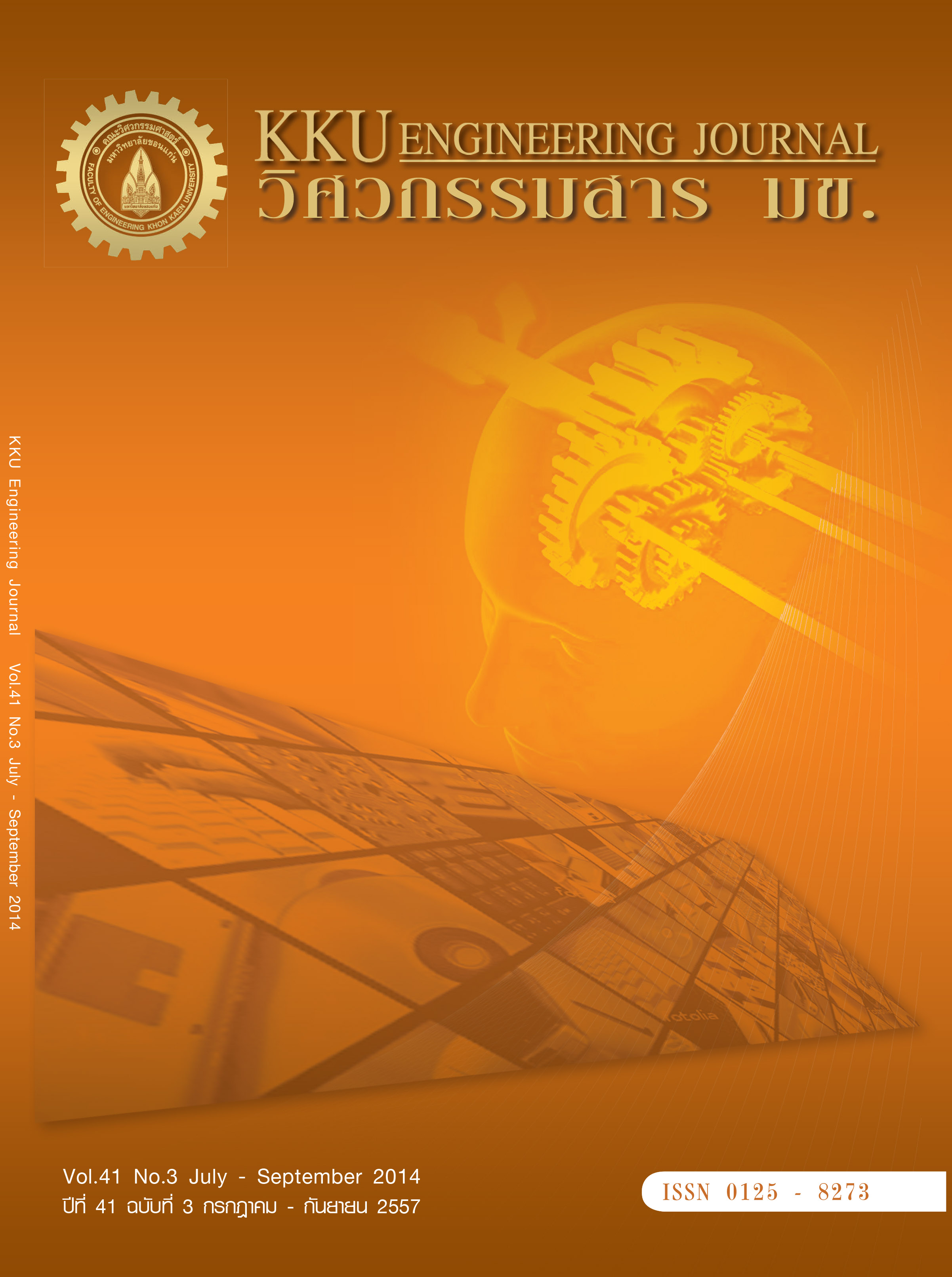Defect reduction for fabric cutting process to produce polo shirts : a case study of garment factory
Main Article Content
Abstract
This research aims to study the factors affecting the crooked fabric cutting and to present the new cutting
procedure that complies with the factors affecting the crooked fabric cutting of a case study. The defect in
fabric cutting process was crooked fabric making nonconforming product. The cause and effect diagram
was utilized to analyze and suggest related factors leading to the problem. It was showed that the number of
times of knife sharpening and the number of layers in fabric paving would affect the crooked fabric cutting
the design of experiment was applied to determine appropriate the level of these factors. The main factor
significantly affected the crooked fabric cutting (p < 0.05) was the number of times of knife sharpening, but the number of layers in fabric paving and interaction between both factors would not significantly affect the
crooked fabric cutting. The number of times of knife sharpening in the level 4 had been sharpened twenty
times in each cutting round. The least average defective proportion was 0.0173. Then the new cutting
procedure would significantly reduce average defective proportion. It could reduce the average number of
defective items as 5.74 pieces in each cutting round or 70.52 percents.
procedure that complies with the factors affecting the crooked fabric cutting of a case study. The defect in
fabric cutting process was crooked fabric making nonconforming product. The cause and effect diagram
was utilized to analyze and suggest related factors leading to the problem. It was showed that the number of
times of knife sharpening and the number of layers in fabric paving would affect the crooked fabric cutting
the design of experiment was applied to determine appropriate the level of these factors. The main factor
significantly affected the crooked fabric cutting (p < 0.05) was the number of times of knife sharpening, but the number of layers in fabric paving and interaction between both factors would not significantly affect the
crooked fabric cutting. The number of times of knife sharpening in the level 4 had been sharpened twenty
times in each cutting round. The least average defective proportion was 0.0173. Then the new cutting
procedure would significantly reduce average defective proportion. It could reduce the average number of
defective items as 5.74 pieces in each cutting round or 70.52 percents.
Article Details
How to Cite
Suttanako, P., & Khokhajaikiat, P. (2014). Defect reduction for fabric cutting process to produce polo shirts : a case study of garment factory. Engineering and Applied Science Research, 41(3), 291–299. retrieved from https://ph01.tci-thaijo.org/index.php/easr/article/view/22502
Issue
Section
ORIGINAL RESEARCH
This work is licensed under a Creative Commons Attribution-NonCommercial-NoDerivatives 4.0 International License.



